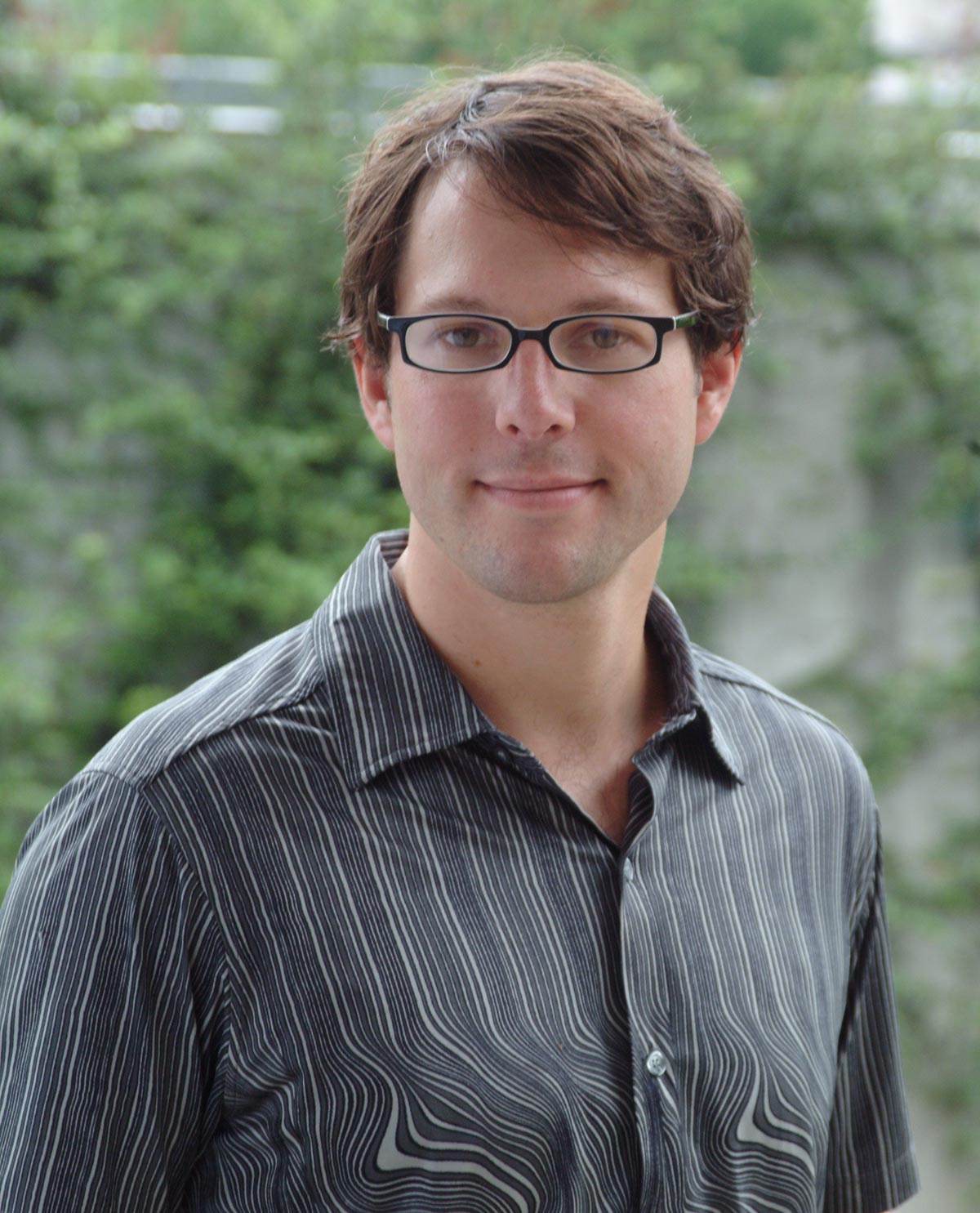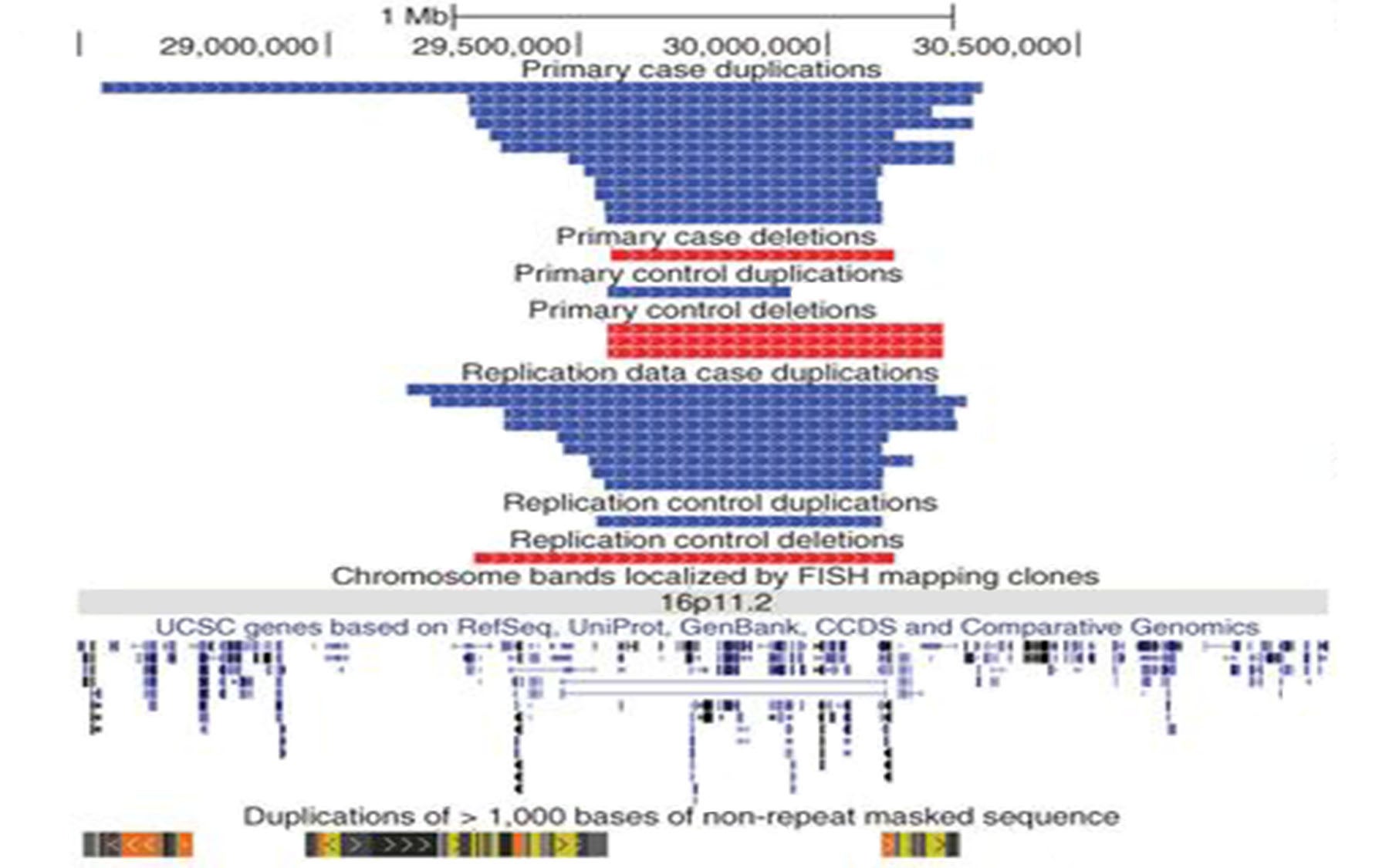Gene copy number variations of the same region, 16p11.2, are already linked to autism
Cold Spring Harbor, NY — An international team of researchers led by geneticist Jonathan Sebat, Ph.D., of Cold Spring Harbor Laboratory (CSHL), has identified a mutation on human chromosome 16 that substantially increases risk for schizophrenia.

The mutation in question is what scientists call a copy number variant (CNV). CNVs are areas of the genome where the number of copies of genes differs between individuals. The CNV is located in a region referred to by scientists as 16p11.2. By studying the genomes of 4,551 patients and 6,391 healthy individuals, Sebat’s team has shown that having one extra copy of this region is associated with schizophrenia. The study appeared online ahead of print on October 25 in the journal Nature Genetics.
The mutation identified in this study is a potent risk factor. “In the general population this duplication is quite rare, occurring in roughly one in 5,000 persons”, says Sebat, “but for people that carry the extra copy, the risk of developing schizophrenia is increased by more than eight-fold.” This finding is the latest in a series of studies that have pinpointed rare CNVs that confer substantial risk of schizophrenia. Others include deletions on chromosomes 1, 15 and 22.
Schizophrenia and autism: two sides of the same coin?
“This is not the first time that the 16p11.2 region has caught our eye,” says Sebat. It was previously spotted in a 2007 study with Professor Michael Wigler at CSHL—a deletion of the identical region was identified in a girl with autism. Studies by several other groups have shown that losing one copy of 16p11.2 confers high risk of autism and other developmental disorders in children.
Taken together these studies suggest that some genes are shared between schizophrenia and autism, according to Sebat and colleagues. “In some ways, we might consider the two disorders to be at opposite ends of the same neurobiological process” says Shane McCarthy, Ph.D., the lead author of the study, “and this process is influenced by the copy number of genes on chromosome 16.” One hypothesis is that the loss of 16p11.2 leads to the deprivation of key genes involved in brain development, while an extra copy of this region might have the opposite effect.
A correlation between 16p11.2 mutations and head size
It is not known what biological processes are affected by the copy number of 16p11.2, Sebat notes. He believes, however, that the team may have stumbled on to an important clue. By studying the clinical records of patients, they discovered that patients with deletions of the region differ significantly in head size from those with duplications of the same region. Sebat reports, “Head circumference of patients with the deletion were larger than average by more than one standard deviation. Head circumference was slightly below average in patients with the duplication.” These findings, he notes, are consistent with some previous studies that have observed a trend towards larger brain size in autism and an opposite trend toward smaller brain size in schizophrenia.
Written by: Peter Tarr, Senior Science Writer | publicaffairs@cshl.edu | 516-367-8455
Citation
“Microduplications of 16p11.2 are associated with schizophrenia” was published online ahead of print in Nature Genetics on October 25, and can be viewed by entering digital object identifier on the journal’s website: doi:10.1038/ng.474. The article will appear in the journal’s print issue for November 2009 (Vol. 41, No., 11). The complete author list is: Shane E McCarthy, Vladimir Makarov, George Kirov, Anjene M Addington, Jon McClellan, Seungtai Yoon, Diana O Perkins, Diane E Dickel, Mary Kusenda, Olga Krastoshevsky, Verena Krause, Ravinesh A Kumar, Detelina Grozeva, Dheeraj Malhotra, Tom Walsh, Elaine H Zackai, Paige Kaplan, Jaya Ganesh, Ian D Krantz, Nancy B Spinner, Patricia Roccanova, Abhishek Bhandari, Kevin Pavon, B Lakshmi, Anthony Leotta, Jude Kendall, Yoon-ha Lee, Vladimir Vacic, Sydney Gary, Lilia M Iakoucheva, Timothy J Crow, Susan L Christian, Jeffrey A Lieberman, T Scott Stroup, Terho Lehtimäki, Kaija Puura, Chad Haldeman-Englert, Justin Pearl, Meredith Goodell, Virginia L Willour, Pamela DeRosse, Jo Steele, Layla Kassem, Jessica Wolff, Nisha Chitkara, Francis J McMahon, Anil K Malhotra, James B Potash, Thomas G Schulze, Markus M Nöthen, Sven Cichon, Marcella Rietschel, Ellen Leibenluft, Vlad Kustanovich, Clara M Lajonchere, James S Sutcliffe, David Skuse, Michael Gill, Louise Gallagher, Nancy R Mendell, Wellcome Trust Case Control Consortium, Nick Craddock, Michael J Owen, Michael C O’Donovan, Tamim H Shaikh, Ezra Susser, Lynn E DeLisi, Patrick F Sullivan, Curtis K Deutsch, Judith Rapoport, Deborah L Levy, Mary-Claire King and Jonathan Sebat.
